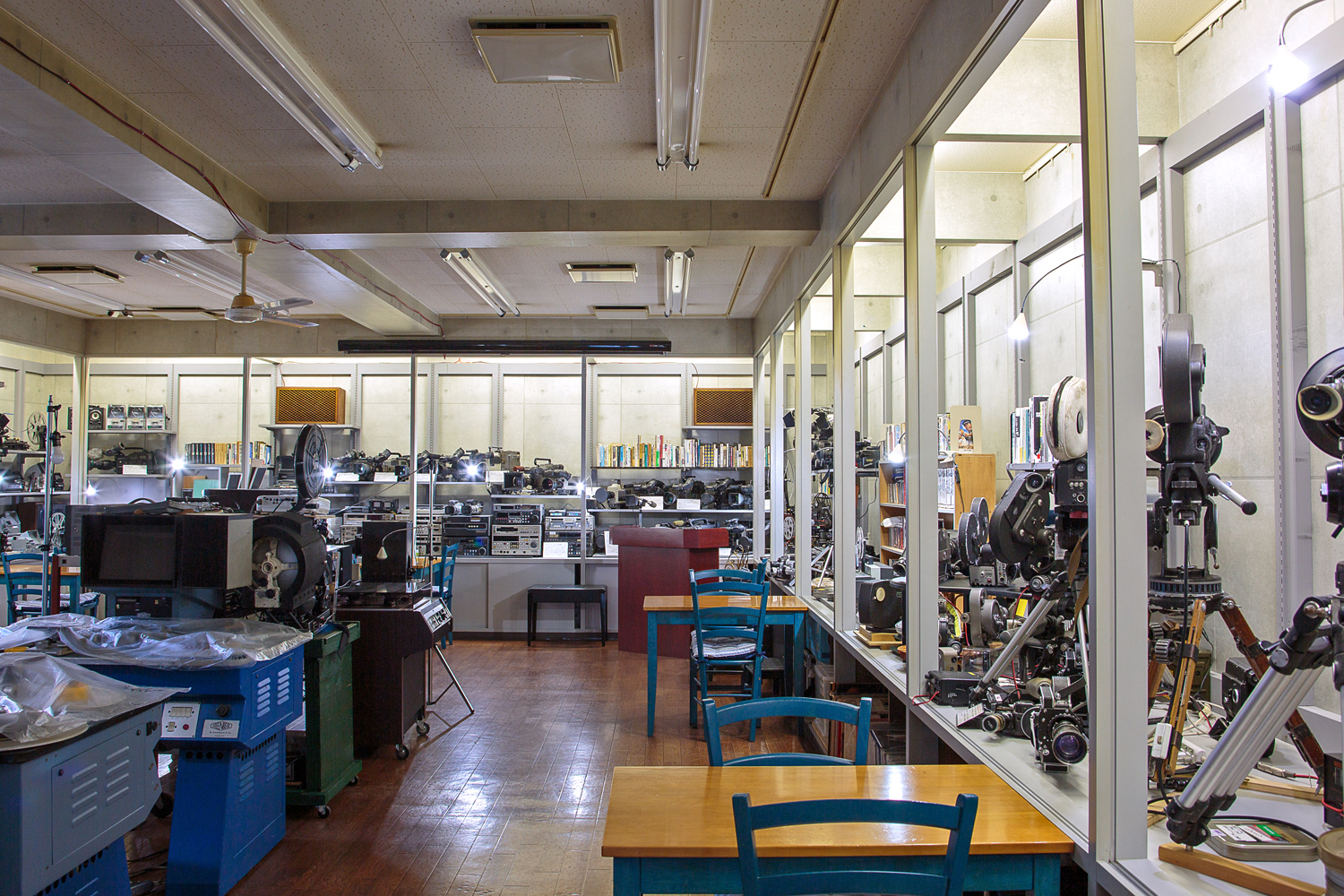
Film cameras, projectors, and other equipment

Film cameras, projectors, and other equipment
Many people have loved movies since childhood, but have never paid attention to the equipment used to show them.
The Sapporo Museum of Imaging Equipment showcases film, video cameras, projectors, and other equipment related to the visual arts. It is operated by Yamamoto Bin, a video cameraman who worked for video production companies in Tokyo and Sapporo before going freelance in Hokkaido. The collection of several hundred items was first exhibited in Noboribetsu, his hometown, in 2015, and was relocated to Sapporo in June 2022.

Yamamoto has been refining his photography skills at a variety of settings since he was in his 20s.
The oldest piece of equipment on display is a hand-cranked projector made in England that is more than 110 years old. Other valuable screening equipment from Japan and abroad are also on display, including a 9.5mm home-use film projector made by Pathé of France in the 1920s.

Hand-operated projector made in England

The equipment's features are presented in the form of testimonials
Yamamoto began collecting equipment when he was in his early 40s. He recalls, "It started when I accepted a video camera that was no longer in use at a set. I asked if I could have it rather than it be thrown away.” From film to video, video production technology has developed remarkably since the 1970s, and the photography equipment that Yamamoto used to work with has changed rapidly since then. While equipment that had been in service not so long ago is becoming obsolete, he took action with a light heart, saying, "If people are going to throw it away, I might as well save it as a keepsake."
However, the amount of equipment in storage gradually increased, and before he knew it, the room in his home was full. With major equipment from a broad range of time periods, he thought, "Perhaps I can create a museum-like exhibition," which led him to the idea of a private museum.

Various types of tapes were developed to record images.
He is attached to analog video equipment such as film and tape because, "There are many mechanical parts, and it is interesting to see the moving structure." Yamamoto believes that, "If intangible visual equipment is the culture of this time period, then the tangible equipment that gave birth to it is also a cultural heritage," and through this museum, he hopes to convey the transition of video equipment.
What makes this museum unique is that visitors can touch and operate these valuable projectors and camera equipment, rather than just looking them.
This is possible because Yamamoto, who has worked in the video industry for more than 40 years, has the skills to repair and maintain the equipment. In addition to the free admission, such a free and enriching management style is the charm of a privately owned museum.
Yamamoto says, "I've spent most of my pension to run the business on my own. I have met many people who have supported me."

This hand-operated projector has been rebuilt and is now in working order
Yamamoto receives an endless number of requests to repair the 8mm film projectors that record family memories.
"Whenever I have time, I do maintenance and collect rare equipment," he says with a smile, and the film equipment that sits by his side appears to be a reflection of his pride.
In November 2022, a coffee shop, Ayane Coffee, opened in the museum. The owner, Tokita Ayako, serves coffee made from home-roasted beans and handmade sweets, allowing visitors to have an even more leisurely time at the museum.

Ayane Coffee, a perfect match for the retro interior of the museum
Hearing Yamamoto's wish to, "Encourage young people to come to the museum and make it a space to promote and develop video culture," it makes you wonder how such analog equipment would look to a generation that can view a wide variety of video content from around the world with a single click.
When the projector lamps light up, my heart skips a beat. In this age of digital technology, the hidden appeal of equipment that can be seen, touched, and operated may become even more appealing.

Sapporo Museum of Imaging Equipment
Heiwadori 2-chome Minami 1-6, Shiroishi-ku, Sapporo, Hokkaido, Japan
Tel.: 090-8631-7050 (direct line to Director Yamamoto Bin)
Hours: 10:30-17:00, closed Tuesdays and Wednesdays
*Ayane Coffee hours: 11:30-18:00, closed on the same days as the museum (Tuesdays and Wednesdays)
Admission: Free of charge
Website (in Japanese)